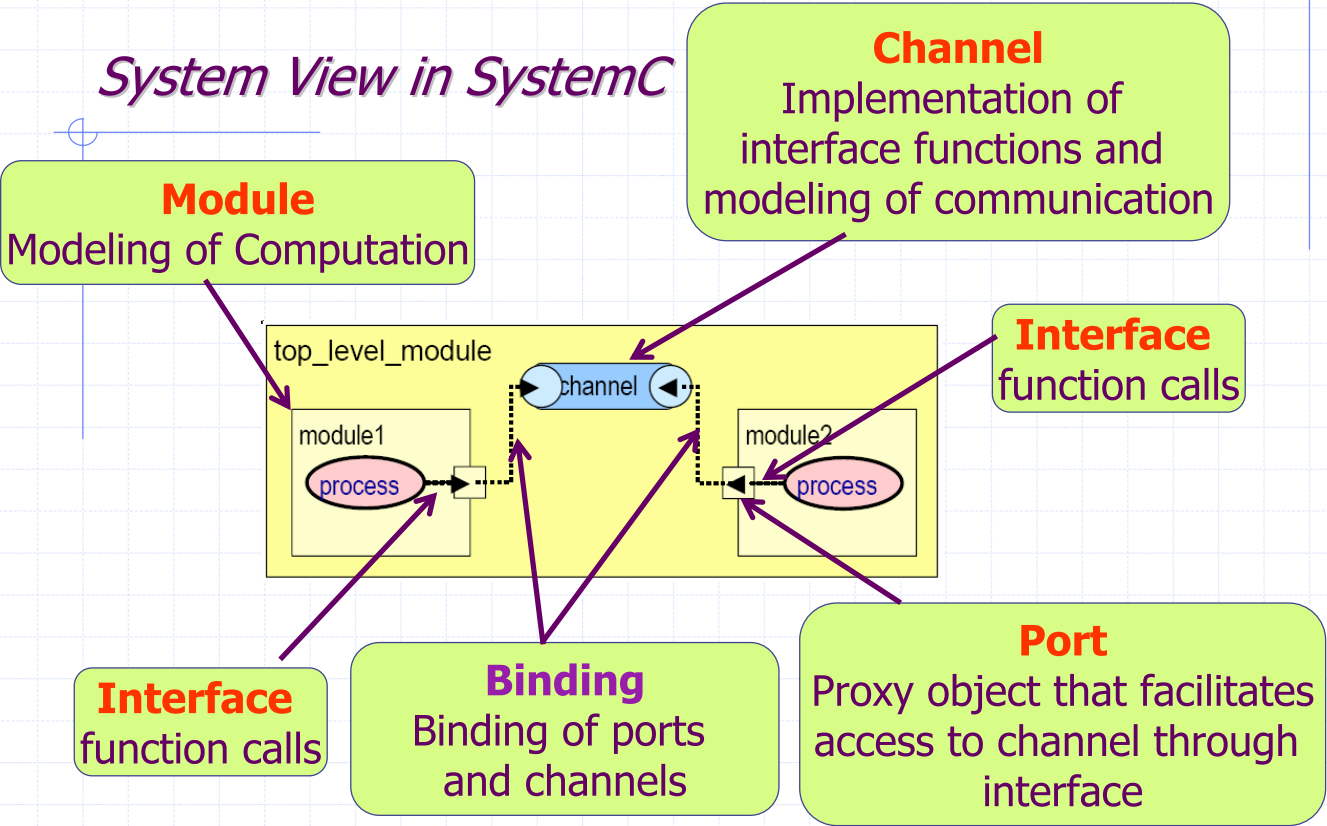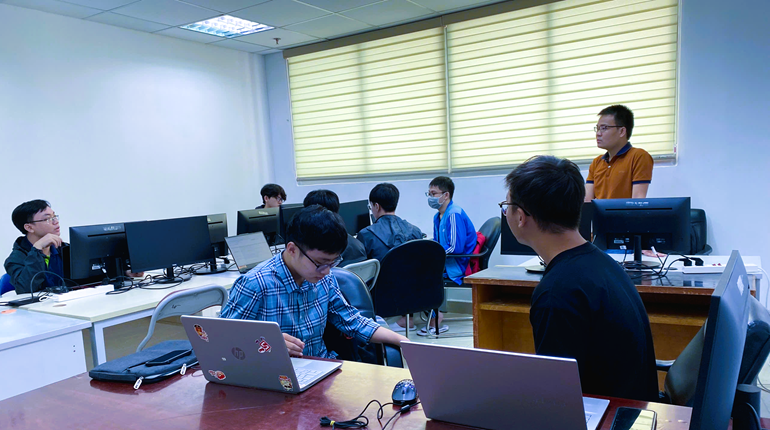
Threads
Threads are second kind of process, which when called keeps executing or waiting for some event to occur. Conditions that enable this processes can be event triggered, like posedge of clock.
Thread Process can be suspended and reactivated. The Thread Process can contain wait() functions that suspend process execution until an event occurs on one of the signals the process is sensitive to. An event will reactivate the thread process from the statement the process was last suspended. The process will continue to execute until the next wait().
Example Threads
1 //-----------------------------------------------------
2 // This is my second Systemc Example
3 // Design Name : first_counter
4 // File Name : first_counter.cpp
5 // Function : This is a 4 bit up-counter with
6 // Synchronous active high reset and
7 // with active high enable signal
8 //-----------------------------------------------------
9 #include "systemc.h"
10
11 SC_MODULE (first_counter) {
12 sc_in_clk clock ; // Clock input of the design
13 sc_in<bool> reset ; // active high, synchronous Reset input
14 sc_in<bool> enable; // Active high enable signal for counter
15 sc_out<sc_uint<4> > counter_out; // 4 bit vector output of the counter
16
17 //------------Local Variables Here---------------------
18 sc_uint<4> count;
19
20 //------------Code Starts Here-------------------------
21 // Below function implements actual counter logic
22 void incr_count () {
23 // For threads, we need to have while true loop
24 while (true) {
25 // Wait for the event in sensitivity list to occure
26 // In this example - positive edge of clock
27 wait();
28 if (reset.read() == 1) {
29 count = 0;
30 counter_out.write(count);
31 // If enable is active, then we increment the counter
32 } else if (enable.read() == 1) {
33 count = count + 1;
34 counter_out.write(count);
35 }
36 }
37 } // End of function incr_count
38
39 // Below functions prints value of count when ever it changes
40 void print_count () {
41 while (true) {
42 wait();
43 cout<<"@" << sc_time_stamp() <<
44 " :: Counter Value "<endl;
45 }
46 }
47
48 // Constructor for the counter
49 // Since this counter is a positive edge trigged one,
50 // We trigger the below block with respect to positive
51 // edge of the clock
52 SC_CTOR(first_counter) {
53 // Edge sensitive to clock
54 SC_THREAD(incr_count);
55 sensitive << clock.pos();
56 // Level Sensitive to change in counter output
57 SC_THREAD(print_count);
58 sensitive << counter_out;
59 } // End of Constructor
60
61 }; // End of Module counter
Bạn Có Đam Mê Với Vi Mạch hay Nhúng - Bạn Muốn Trau Dồi Thêm Kĩ Năng
Mong Muốn Có Thêm Cơ Hội Trong Công Việc
Và Trở Thành Một Người Có Giá Trị Hơn
















